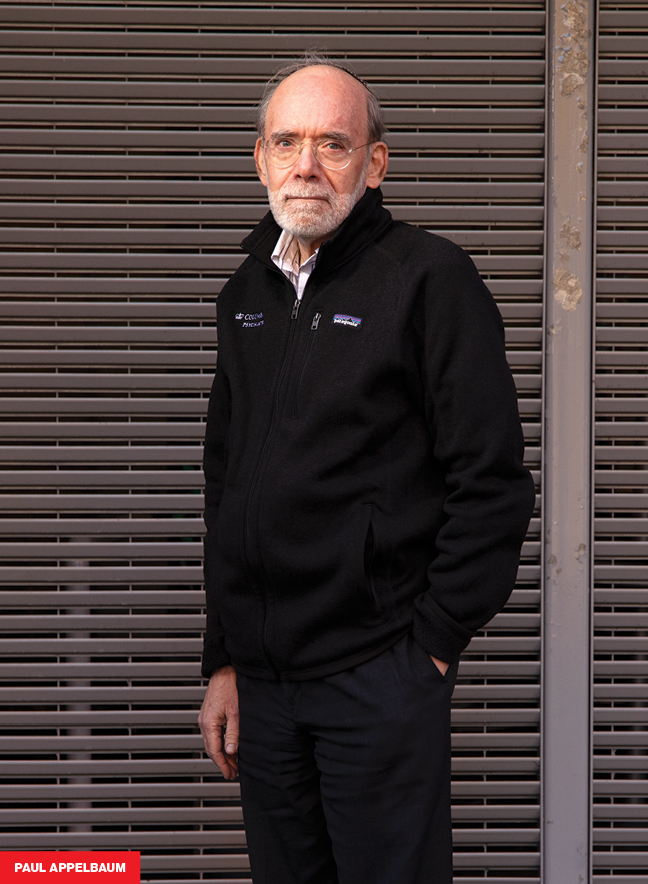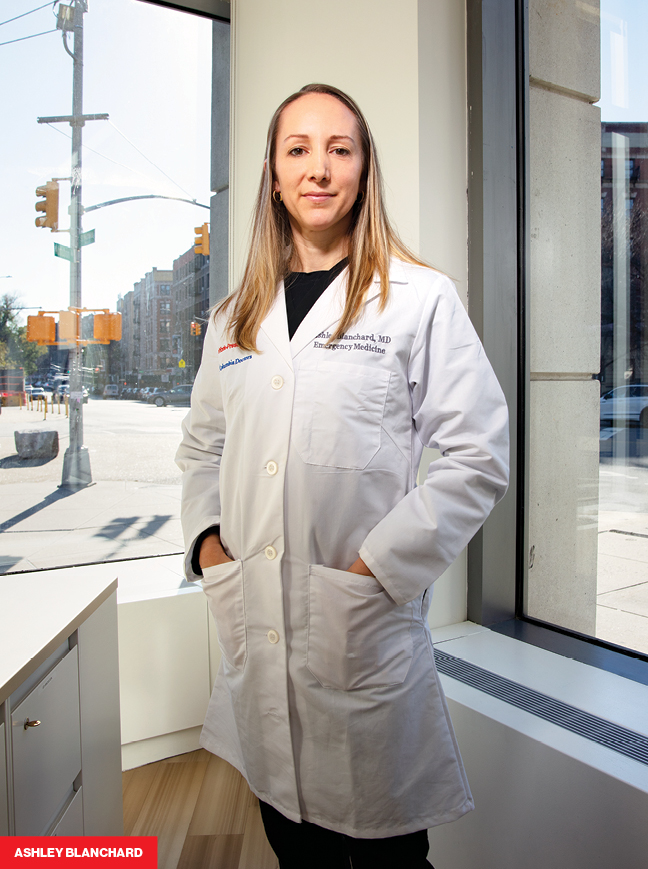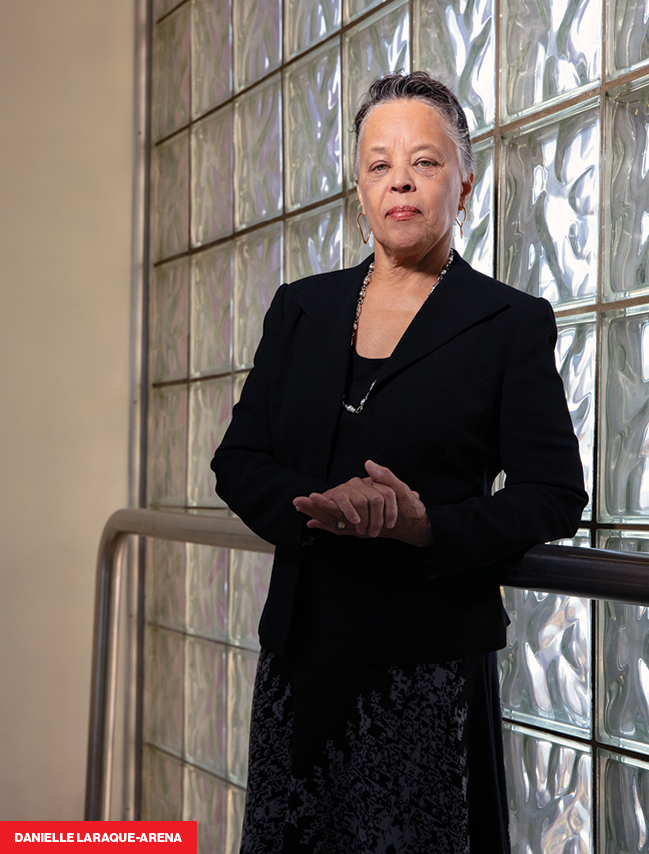Gun Violence: Can Research Help?
The problem of gun violence in America can at times seem utterly intractable.
The horrific frequency of mass shootings (almost 300 in the first six months of 2022, according to the Gun Violence Archive), the tragic daily toll of firearm-related deaths (124 per day on average, according to the CDC), and the inability of politicians to implement effective gun control measures have had devastating personal consequences for individuals and families and pose a significant public health challenge for the nation.
The CDC reports that firearm-related injuries rank among the five leading causes of death for people ages 1 to 44 and are now the leading cause of death for children and adolescents, killing more people ages 1 to 19 than car accidents, drug overdoses, or cancer.
But for epidemiologist and gun violence expert Charles Branas, PhD, the Gelman Professor of Epidemiology and chair of the Department of Epidemiology in the Mailman School of Public Health, the scope and recalcitrance of the problem only heighten the urgency of answering one basic question: “What do you do about it?”

Toward that end, in 2020 Dr. Branas helped launch the Columbia Scientific Union for the Reduction of Gun Violence, or SURGE, a coalition of faculty, students, and alumni from across the university dedicated to finding creative scientific solutions to gun violence.
The need for such interventions is especially pressing given the difficulty of enacting gun control at the state and national levels, despite research by Dr. Branas and others showing that stricter gun control laws do in fact reduce gun violence. (The bipartisan gun safety legislation passed by Congress in June supports some existing evidence-based measures, but in limited fashion.)

Efforts to find solutions have been hindered by a lack of government funding for scientific research into gun violence. Federal funding dried up in 1996 after Congress passed the Dickey Amendment, which barred the CDC, and later the NIH, from spending money to promote gun control and dissuaded many young scientists from pursuing careers in gun violence research.
Recently, however, SURGE and other groups persuaded Congress to renew federal funding. And Dr. Branas hopes that fresh grants from the CDC and the NIH, coupled with opportunities for networking and collaboration provided by SURGE, will encourage a new generation of researchers to develop innovative, evidence-based interventions to prevent gun violence.
Dr. Branas sees signs that this is already happening.
Junior faculty, including Ashley Blanchard, MD, a pediatric emergency physician at VP&S, are investigating novel interventions with the support of fellow SURGE members. And the coalition is helping senior faculty like Dr. Branas and Paul Appelbaum, MD, the Elizabeth K. Dollard Professor of Psychiatry, Medicine and Law, engage with like-minded colleagues from a variety of disciplines. Other SURGE members are from Columbia’s schools of law, nursing, and social work and from Teachers College and Barnard College.

“I remember walking into the room during our first meeting and just being in awe that there was this larger campus consortium of people interested in doing this type of work,” says Dr. Blanchard, assistant professor of pediatrics (in emergency medicine). “As a junior investigator, I can’t navigate the path to a firearm-related research career without having that mentorship. Having that room, and those groups of people, has really been incredible.”
DEEP ROOTS
If SURGE represents a new path to novel solutions to gun violence, it builds on decades of work by VP&S physicians. SURGE member Danielle Laraque-Arena, MD, a pediatrician and professor of clinical epidemiology and pediatrics at the Mailman School and VP&S, helped pioneer place-based gun violence interventions while working at Harlem Hospital from 1986 to 2000, a period that coincided with a national spike in gun violence.
During that time, Dr. Laraque-Arena and Barbara Barlow, MD, then chief of pediatric surgery at Harlem Hospital, partnered with city agencies and community members to reduce injury rates among children and adolescents in central Harlem.

Data collected through the Northern Manhattan Injury Surveillance System, a population-based survey developed by the Mailman School to tally severe injuries, indicated that adolescents represented 89% of gun-related deaths. Many of the deaths involved unintentional firearm injuries or individuals caught in crossfire, and the vast majority of fatalities occurred before hospitalization, which suggested that only prevention could significantly reduce firearm fatalities among young people in the area.
Dr. Laraque-Arena and her colleagues focused on implementing programs designed to create safe spaces and activities for children and adolescents, including several locations that involved rehabilitating and greening public spaces such as parks and playgrounds. The goal was to reduce the risk of intentional and unintentional injuries alike; an analysis showed that such broad-based, environment-oriented projects did significantly reduce firearm injuries.
Decades later, Dr. Branas tested the power of place-based interventions through citywide experiments conducted in Philadelphia, Detroit, and New Orleans. Among other things, he and his colleagues showed that rehabilitating abandoned buildings and vacant lots, which function as storage lockers for illegal firearms, can reduce gun violence by as much as 39%.
A study showed that rehabilitating abandoned buildings and vacant lots, which function as storage lockers for illegal firearms, can reduce gun violence by as much as 39%.
Dr. Branas is in talks with the parks department and other city agencies to bring similar programs to New York City. Together with SURGE member Sonali Rajan, PhD, an associate professor of health education at Teachers College, Dr. Branas leads a nationwide case-control study of firearm violence prevention tactics and policies in K-12 schools. The study, which is funded by the NIH, will examine 650 schools, comparing the safety measures (metal detectors, active shooter drills, armed school personnel) in place at schools that have experienced shootings with those that have not.
RIGOROUS SCIENTIFIC APPROACH
Dr. Appelbaum, who has for many years explored the relationship among mental health, gun violence, and gun policy, and Dr. Blanchard bring a similarly rigorous scientific approach to understanding—and preventing—gun violence.
In a series of studies examining the relationships among gun ownership, gun violence, and mental illness, Dr. Appelbaum has debunked the notion, often floated by politicians in the wake of mass shootings, that such events can be prevented by addressing serious mental illness.
“As human beings, we have a natural inclination when we see an act that is incomprehensible to assume that the person who did it must be, in lay terms, crazy,” Dr. Appelbaum says. The data suggest that most of those who commit these acts are not mentally ill. “They’re angry, they’re isolated, they’re frustrated, but they are not suffering from psychosis or other severe mental disorders.”
Dr. Appelbaum points out that the situation is different for suicide. Depression, substance use, and other mental disorders are strong risk factors for self-harm. As a result, efforts to identify and treat people suffering from such disorders can indeed prevent suicides if done effectively.
Nonetheless, he says, the most effective way to prevent gun violence, whether directed at others or at oneself, is to limit access to firearms.
REDUCING ACCESS
"There's good evidence to show that especially in adolescents, the transition from contemplating suicide to action is very short-lived and transient."
Measures aimed at keeping guns out of the hands of high-risk groups include red flag laws that allow the authorities to temporarily confiscate firearms from individuals who represent a threat to themselves or others; safe storage options, such as gun safes and trigger locks; and child access prevention laws that penalize adults for failing to store firearms safely and allowing children access to them.
Such measures have been shown to reduce firearm injuries and deaths and could play a particularly important role in preventing suicides. Studies show that most people who attempt suicide do so on impulse, moving from decision to action in less than an hour.
“There’s good evidence to show that especially in adolescents, the transition from contemplating suicide to action is very short-lived and transient and therefore utilizes whatever means are easily available,” Dr. Blanchard says.
The extraordinary lethality of guns means that someone who decides to commit suicide and has access to a firearm is much more likely to succeed than someone who does not. Research indicates that acts of suicide involving a firearm are fatal 90% of the time, compared with 13.5% for self-poisoning.
“The gun doesn’t give you a second chance,” says Dr. Laraque-Arena.
The Mailman School of Public Health offers a three-credit course, “Gun Violence in the United States: Evidence & Action,” through the school’s Department of Epidemiology. The course is one of only a few courses of its kind in the United States. The course explores the epidemiology of gun violence—which has killed more Americans since 1968 than have died in wars since the country’s founding—and efforts to address the problem.
"Addressing this crisis means solving tenacious public health problems in the realms of science and of politics,"" says Charles Branas, who helps to teach the course with Ted Alcorn, founding research director of Everytown for Gun Safety.
The course uses lectures, guest speakers, and discussion to understand the political and legal context that shapes collective actions contributing to gun violence. Students learn about the major drivers of firearm injury, individuals who have influenced the country’s policy response, and the underlying beliefs and behaviors that define America’s relationship with guns. Guest speakers represent local antiviolence organizations, law enforcement, government, and academia and welcome the opportunity to open a dialogue about their work.
Other Columbia schools also offer courses on gun violence. Barnard College offers a course that examines the politics of guns from multiple angles. The law school offers a seminar on the social and legal regulation of firearms. Teachers College offers a course on social policy and prevention.
As a result, taking firearms out of the equation immediately reduces the likelihood that a suicide attempt will succeed. In keeping with that logic, Dr. Blanchard is conducting a pilot feasibility study of a tablet-based tool called Lock and Protect intended to increase safe storage or removal of guns and other lethal means by parents whose adolescents are at increased risk of suicide.
The tool is being studied in the pediatric emergency department at NewYork-Presbyterian’s Morgan Stanley Children’s Hospital, where Dr. Blanchard and her colleagues often see patients who engage in predictors of suicide such as suicidal ideation and self-harm. The primary goal of the study, which involves experts from the departments of emergency medicine and psychiatry and the Irving Institute for Clinical and Translational Research’s Implementation Science Initiative, is to determine the feasibility of implementing the tool and expanding a trial for a larger emergency department population.
Patients and their parents enroll in the study together. The tool evaluates suicide risk using questionnaires such as the Columbia Suicide Severity Rating Scale and guides parents through the process of identifying the lethal means in their homes (guns, medications, ligatures) and understanding how they can best keep their children safe.
The tool was designed to take into consideration factors such as the cost of safe storage and the values of parents, including those who feel strongly about gun ownership. At tool completion, a safety plan is provided to parents to implement at home. Dr. Blanchard and her team follow up with parents at two weeks and with patients and parents at four weeks, with the long-term objective of understanding if the tool helps change home storage of guns and other lethal means.
Lock and Protect is precisely the kind of innovative gun violence intervention that Dr. Branas hoped SURGE would produce, and he is certain that more will be developed as the coalition continues to grow.
“We are two years into this,” he says. “We’ve done quite a bit, but we’re still building.”
- Log in to post comments


